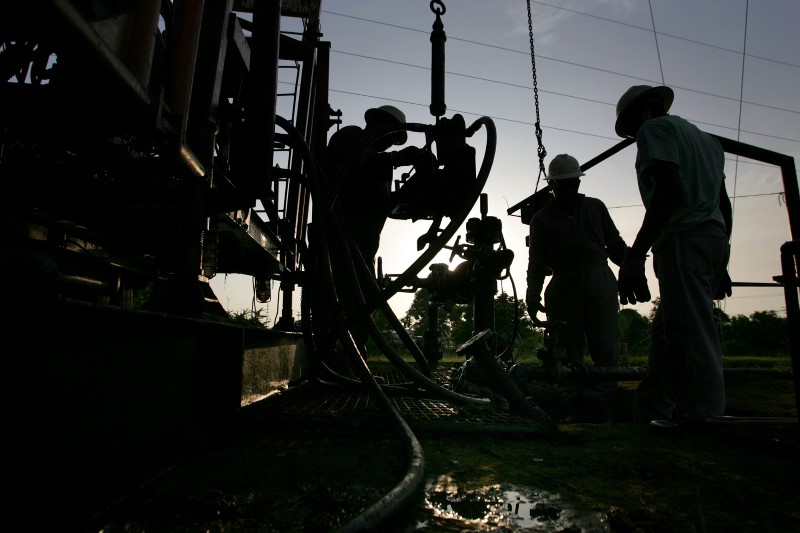By John Kemp
LONDON (Reuters) - The U.S. oil industry probably passed the low point in the current cycle in July and August, with drilling rates set to start increasing from September or October and production turning up from March or April 2021.
Since hitting a low in late April, when the coronavirus epidemic was raging and lockdowns were most stringent, front-month U.S. oil futures prices have progressively risen for the last 19 weeks.
Over the last 30 years, changes in futures prices have typically been followed by changes in drilling with an average delay of 4-5 months (15-20 weeks) and changes in output with an overall delay of 9-12 months.
The delay from changes in prices to drilling can be explained by the time needed for businesses to re-evaluate drilling programmes, contract rigs, move them to the well site, rig them up and start boring.
Further delays to final changes in production are due to the time needed to reach target well depth, case and cement the well, fracture the formation, install wellhead equipment, flow test, link the well up to gathering systems and start commercial output.
Every well and every cycle is slightly different, but in the last three decades cycles in futures prices, drilling rates and production have followed each other in a standard sequence with fairly standard lags.
Given that oil prices hit a cyclical low 19 weeks ago, doubling in the meantime, it is very likely drilling rates are now near or beyond their low point for the current cycle (https://tmsnrt.rs/3jQFqj9).
In fact, there were 180 rigs drilling for oil last week in the United States, up from a current-cycle low of 172 two weeks earlier, according to oilfield services company Baker Hughes.
The number of active oil rigs has been broadly stable for the last seven weeks, after plunging almost 75% between mid-March and mid-July, which may indicate the low point of the drilling cycle has been reached.
The rig count is likely to start trending higher over the last few months of the year as the rise in oil prices since April starts to filter through into business decisions and contracting.
By contrast, production is likely to continue trending lower for several months more until the end of 2020 or early 2021 before turning higher again.
Natural declines will reduce output from wells that started producing before the epidemic, while the reduced rate of drilling since then means it will not be completely replaced.
Eventually, higher prices and higher drilling rates will cause new production to make up for the loss of old output and total production will stabilise and start increasing again.
The precise timing obviously depends on the course of prices, but the most likely time frame for output to hit a trough and turn higher is towards the end of the fourth quarter of 2020 or in the first quarter of 2021.
The rise in prices since April is a signal more drilling and more new well output will be needed to stabilise production and will provide the necessary cash flow.
The fact U.S. oil futures prices have been steadying around $40-45 per barrel in recent weeks indicates this is the range expected to stabilise output.
But if prices continue climbing to $50 or more, drilling will accelerate further, generating a larger production increase from the second half of 2021 onwards.
Related columns:
- Oil prices no longer especially cheap after strong rally (Reuters, June 19)
- Oil prices likely to average less than $60 over next cycle (Reuters, June 17)
- U.S. oil output set to slump as prices plunge (Reuters, April 8)
- U.S. oil output set to plunge as storage fills (Reuters, April 1)
